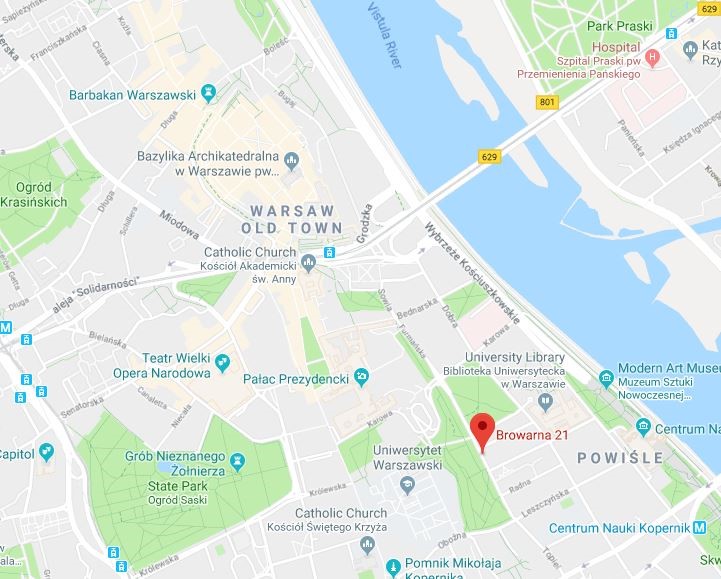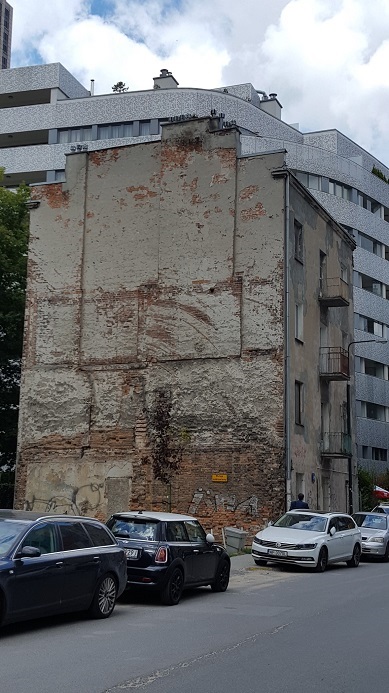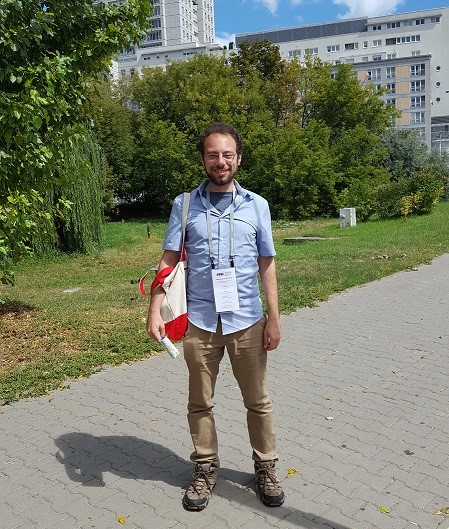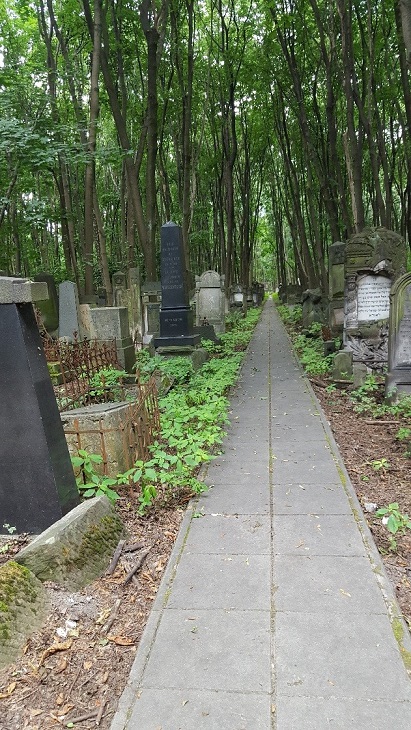To (Great-Great-Great-) Grandmother's House We Go

Last summer, I was lucky enough to have had the opportunity to travel to Poland. I participated in the IAJGS conference in Warsaw, and was also invited to present at the Gesher Galicia symposium . It was a phenomenal opportunity to hear fascinating speakers, learn so much, and share some of my own insights with others.
 In fact, my grandfather’s paternal grandparents had both come from Warsaw. Although my grandfather had never known that set of grandparents, in my research I was able to come up with a very good approximation for the location of their residences in the city (see: external article): Ulica Dzika #38 (my great-great grandfather) and Ulica Browarna #21 (my great-great-grandmother). As chance would have it, it turns out that my great-great grandmother and her family lived just four blocks from Chopin’s childhood home. Her house was also only one block from the high school where Chopin attended and where his father taught French.
In fact, my grandfather’s paternal grandparents had both come from Warsaw. Although my grandfather had never known that set of grandparents, in my research I was able to come up with a very good approximation for the location of their residences in the city (see: external article): Ulica Dzika #38 (my great-great grandfather) and Ulica Browarna #21 (my great-great-grandmother). As chance would have it, it turns out that my great-great grandmother and her family lived just four blocks from Chopin’s childhood home. Her house was also only one block from the high school where Chopin attended and where his father taught French.
Self-Guided Tour No. 1
During some of my spare time between conference sessions, rather than sticking to the bland corporate hotels of the conference district I chose to wander the streets of Warsaw. Naturally, the two most important stops of my self-guided tours of Warsaw were Ulica Dzika #38 and Ulica Browarna #21. As Ulica Browarna is closer to the center of the city, about half a mile south of Old Town, I chose to visit that one first. Along the so-called Royal Route I followed for most of the way there, large eighteenth-century Georgian-style edifices, reconstructed after the war, line both sides of the wide boulevard. Filled with restaurants, cafes, shops, and tourists, the street is a hub of activity.
Stopping to admire Chopin’s house, I encountered a very friendly Ukrainian couple who took my photo. Fleeing poor economic conditions brought on by the war, the two had both recently graduated from Warsaw University. When I told them about my great-great grandmother’s house, they insisted on taking me there themselves even though I already knew where to go. They were particularly eager to lead me because the route led directly through their university.
About three quarters of the way to the house we parted ways. Of course, I made sure to visit Chopin’s high school, rebuilt after World War 2 and now used as the university administration building. I couldn’t actually go inside, but I was able to admire it from the outside. I also discovered that the building is at the top of a fifty-foot tall cliff; although on the map it looks like it is just one block from my ancestor’s house, the actual path I had to take was a bit longer and more roundabout.
The actual house does not exist anymore—the city of Warsaw was systematically razed to the ground by the Nazis after the Warsaw Uprising, and almost 90% of its buildings were obliterated. Other than Old Town, New Town (a historic area almost as old as Old Town), and the Royal Route, much of it was rebuilt in modern Stalinist style by the post-war Communist government. Though there was nothing left that any of my relatives could have recognized, it still felt immensely gratifying to be standing at the very spot where they had lived so long ago.
Immediately adjacent to where I believe the house once stood, there is now an Italian restaurant housed in a swanky modern building. After explaining the significance of the location and taking a few moments to savor the experience, I took the opportunity to enjoy a delicious plate of ravioli. I believe my grandfather’s grandmother would have been happy.
Self-Guided Tour No. 2
My great-great grandfather had lived in an entirely different part of the city, about a mile and a half northwest of Old Town in what was once one of Warsaw’s largest Jewish quarters. Several days after my excursion to Ulica Browarna, I decided to pay him a visit. Walking north from the Hilton, the sleek ultramodern business architecture of the conference district yielded to block after block of Soviet-era apartments. In fact, I felt like I was back in Moscow, where I had studied during my senior year of college. I was struck by how similar many parts of Warsaw look to much of Moscow outside its very center. Periodically, the socialist landscape was punctuated by an old prewar building or two—an extremely odd juxtaposition of fundamentally incompatible architecture.

After wandering for a while through the streets, armed with a map in one hand and my lunch in the other, I made my way to Ulica Dzika. I can’t be 100% sure of where exactly on this street my grandfather lived, but my closest guess is at the northern end of the street, near a large traffic circle. The spot is now a vacant grassy field.

The north end of Ulica Dzika is only a few blocks from the Okopowa Cemetery, one of the largest Jewish cemeteries in the world. I took the opportunity to wander through it. With its beautiful trees, plants, and paths, it feels almost like an enchanted forest.

But to me this was not just a beautiful cemetery. In fact, my great-great grandfather’s mother is buried here. I had found her record in a cemetery database and attempted to find her tombstone. Unfortunately, although I had the exact location where she was supposed to be I was still unable to find the actual grave. Nevertheless, visiting the final resting places of so many of the Jewish people, some of them undoubtedly the friends and neighbors of my relatives, was an extremely spiritual experience.
The Return
Before this trip, I had never been to Warsaw or anywhere else in Poland. I have never even known anyone who knew my relatives from there. My ancestors left Warsaw and moved to Berlin in 1894—more than 120 years ago. My grandfather grew up in Munich, and he came to America 35 years before I was born. Yet as I wandered the streets, which were not only new to me but would have been virtually unrecognizable to my ancestors who lived here—and despite the tragic history that befell the Jewish community there in the twentieth century—I couldn’t help feeling some kind of connection to the city. No matter where I live, New York City will always be my home—but still I felt something when returning to this strange, faraway place my ancestors once called home.

Add new comment